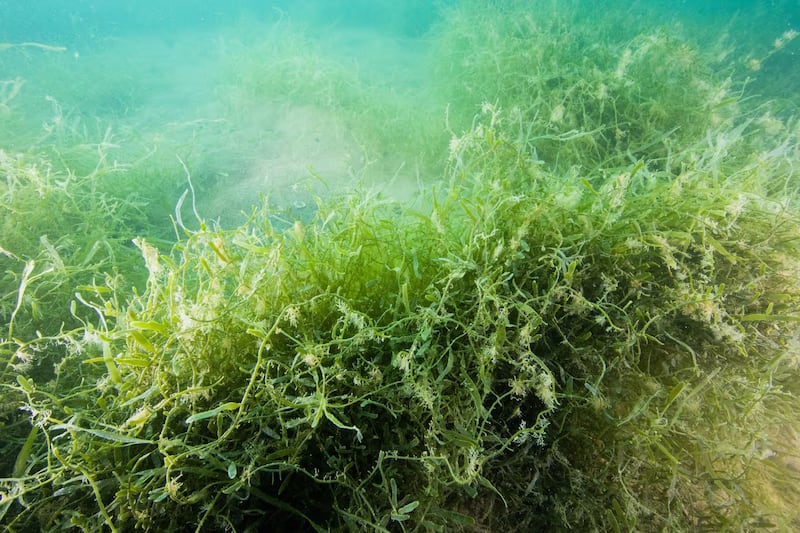Ngāti Manuhiri and Biosecurity New Zealand have begun a three-week targeted dredging trial to eradicate an invasive seaweed, exotic caulerpa, from Iris Shoal near Kawau Island in Te Moana a Toi, Hauraki Gulf.
If left unchecked, the foreign seaweed forms dense mats across the seabed smothering native plants and upsetting the balance of the marine ecosystem.
The suction dredging trial, involving marine specialists from NIWA and Bay Underwater Services NZ Ltd, aims to remove almost 18 hectares of the invasive seaweed, says Nicola MacDonald, chief executive of Ngāti Manuhiri Settlement Trust.
“Dredging involves divers using an underwater suction pump to extract caulerpa from the seabed, and this trial will help inform how we remove caulerpa in other areas.
“The programme will be underway for the next three weeks and we hope to remove close to 18 hectares of caulerpa from the seafloor as well as identify other potential sites for dredging.”
A karakia to ensure the cultural safety of all those involved in removing the caulerpa was led by Ngāti Manuhiri kaumātua Ringi Brown on Tuesday.
MacDonald says they are hopeful the trial will give them much-needed “cut through” so they can get closer to eliminating the “pest”.
The trial site at Iris Shoal, which is marked out with detection buoys, will be closed to the public until about May 17 (weather permitting), when it’s expected the work will be completed.
Caulerpa has also recently been discovered elsewhere in the rohe of Ngāti Manuhiri at the Mokohīnau Islands.
Ngāti Manuhiri is coordinating a response group and consulting with experts from the University of Auckland to determine the best approach for the delicate reef system around the Islands. It hopes to begin treatment in the next week.
In 2023, Ngāti Manuhiri brought in expert scientists from the United States, who had successfully eradicated caulerpa in California, and facilitated an educational roadshow from the Bay of Islands to the Hauraki where caulerpa had been identified. The aim was to support whānau, hapū and communities by raising awareness on how they can combat the seaweed.

